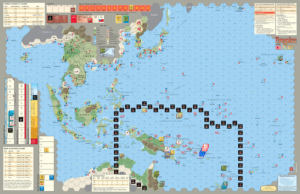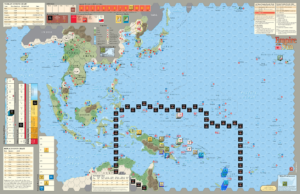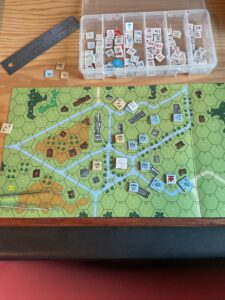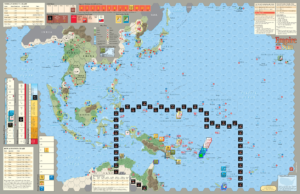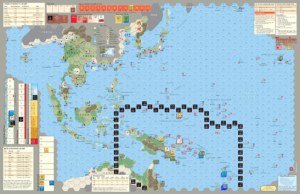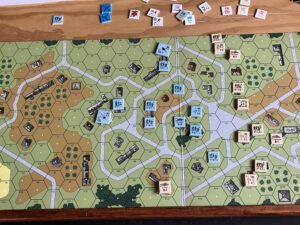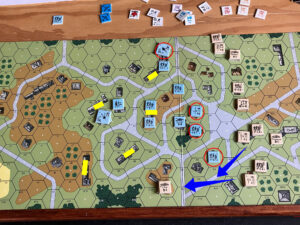Sequestered upstairs as RGC is busy getting ready for the Holiday Open House. Arizona State vs. Iowa State turned into a blow-out. Why not start up another session of SOPAC?
Allies took the first turn by playing the Operation Watchtower card lying in the Future Offensive pile. It’s a powerful card, enabling the Allies to activate up to seven (7) units. Because Interservice Rivalries (ISR) are in play (for both sides), only Navy/USMC/Commonwealth units could be activated. The Allies activated the North Carolina, Northampton, Wasp and Kent, as well as the 1st Marine Air Wing and 1st Marine Division. Guadalcanal was designated as a Battle Hex.
The Japanese played the Japanese Counterattack Card At Savo Island Card. Another powerful card allowing them to activate their four naval units at Rabaul.
The ensuing Naval/Air Battle involved 36 Allied points and 42 Japanese Points (each Japanese naval unit also received a +2 combat bonus).
The Japanese rolled an eight (8) and Allies rolled a nine (9). Both sides were able to apply all of their combat power. Lower rolls reduce the percentage of total combat power applied to the battle. A die roll of nine (9) also includes a critical hit, allowing the Allies to designate one enemy unit to be eliminated before other units are reduced.
So, Japan won the Naval/Air Battle (42-36).
Genius Boy did not remember that if you lose the Naval/Air Battle any amphibious landing is called off. A bad defeat for United States…..on Pearl Harbor Day!
Last week, I read each of these opening move articles over at the GMT Web Site (Part 1 and Part 2). Nothing sank in (pun was not intended). Here’s a photo of the debacle.
